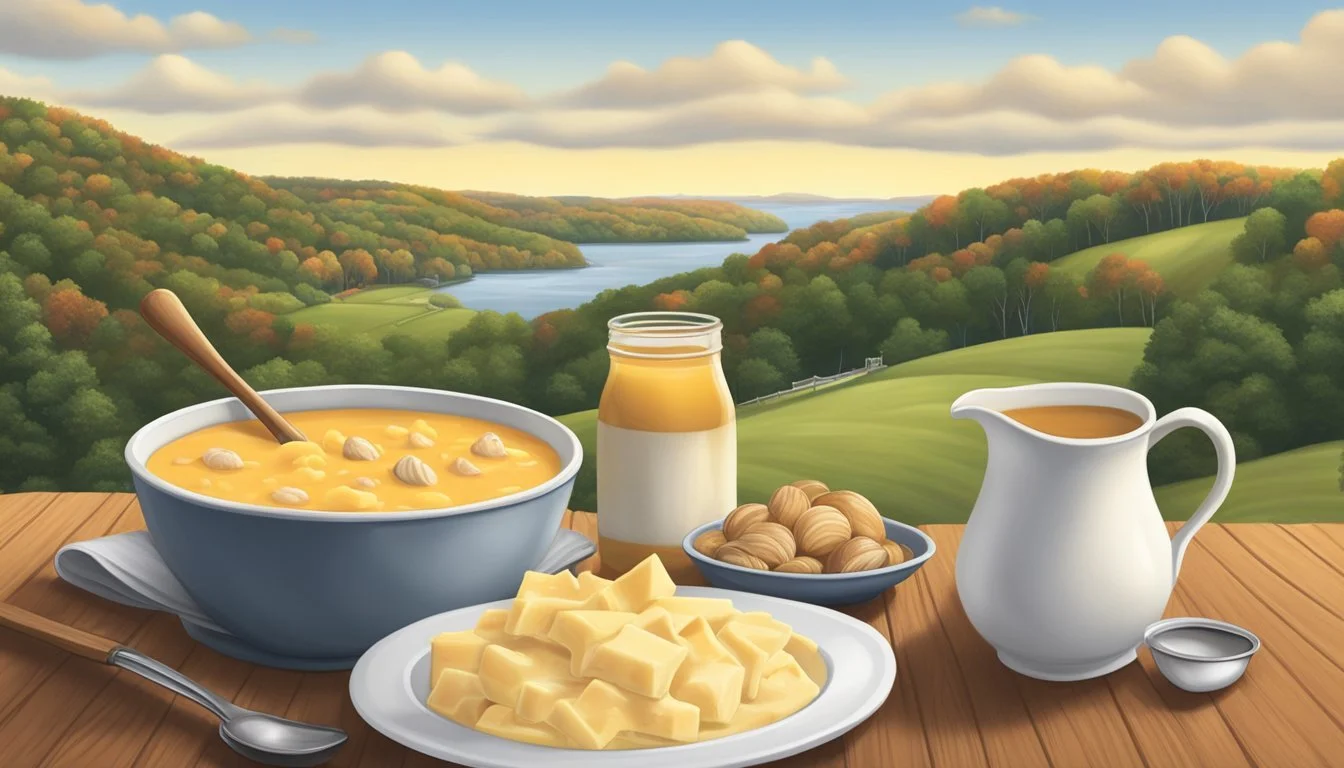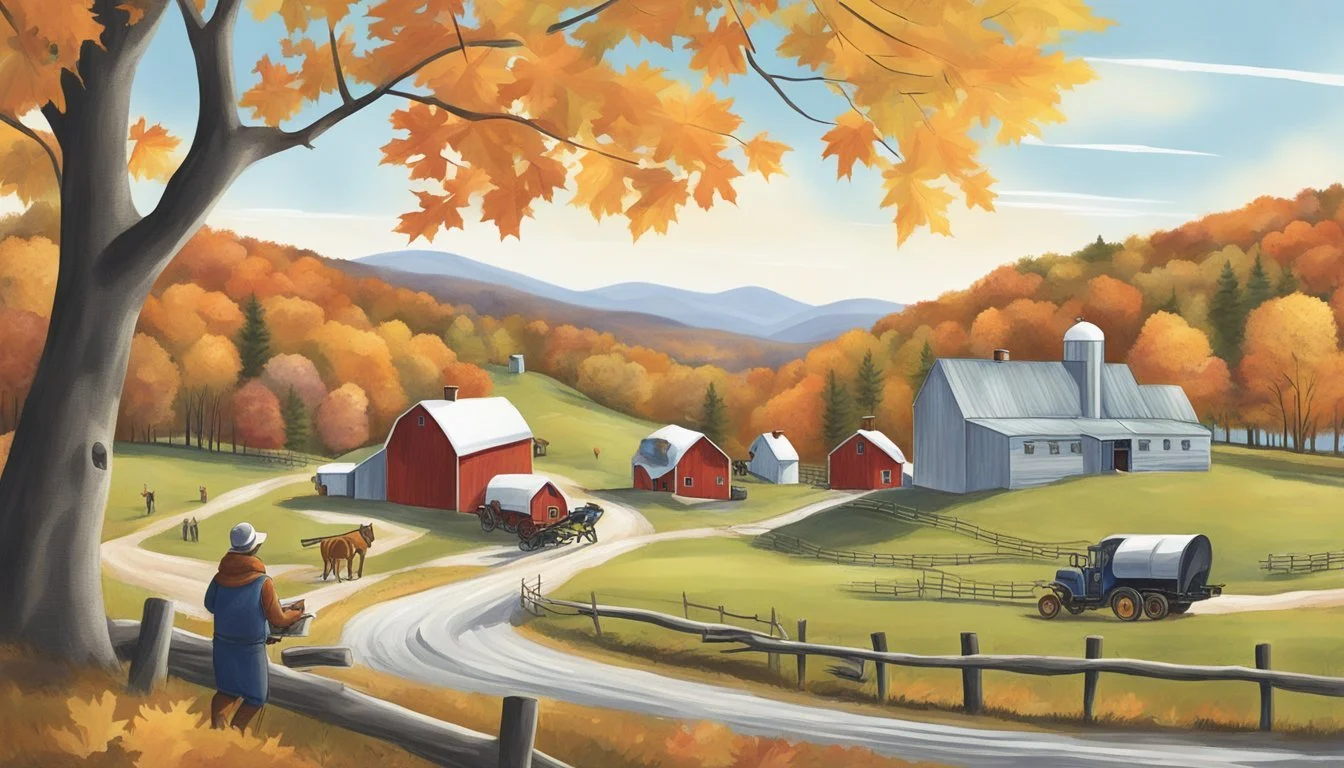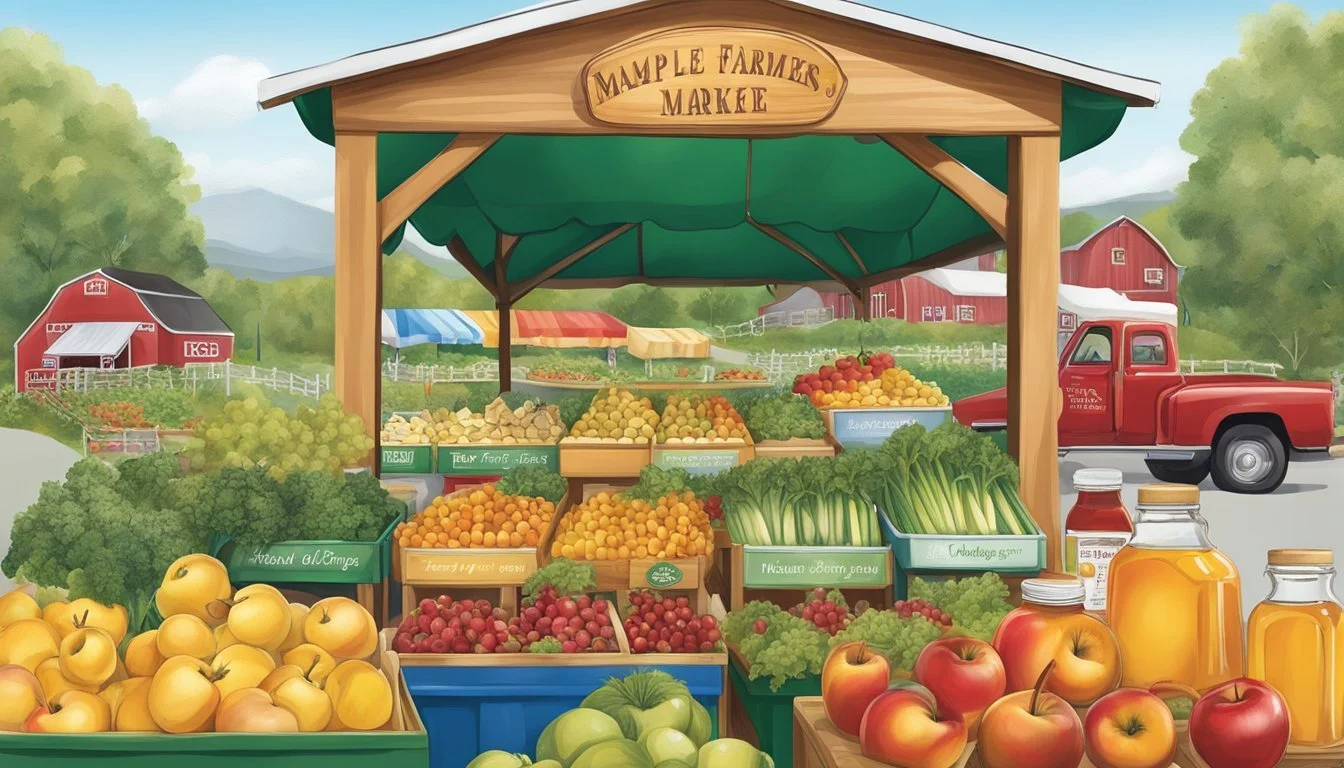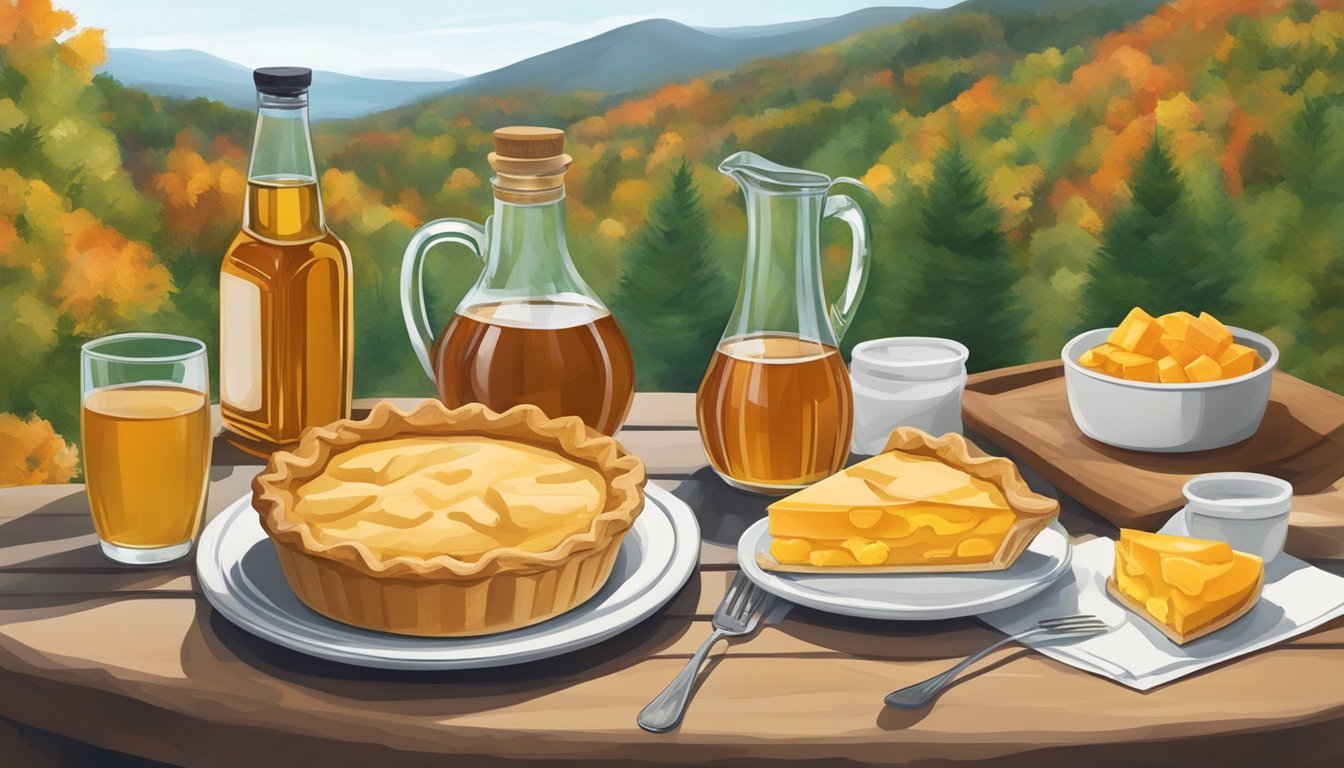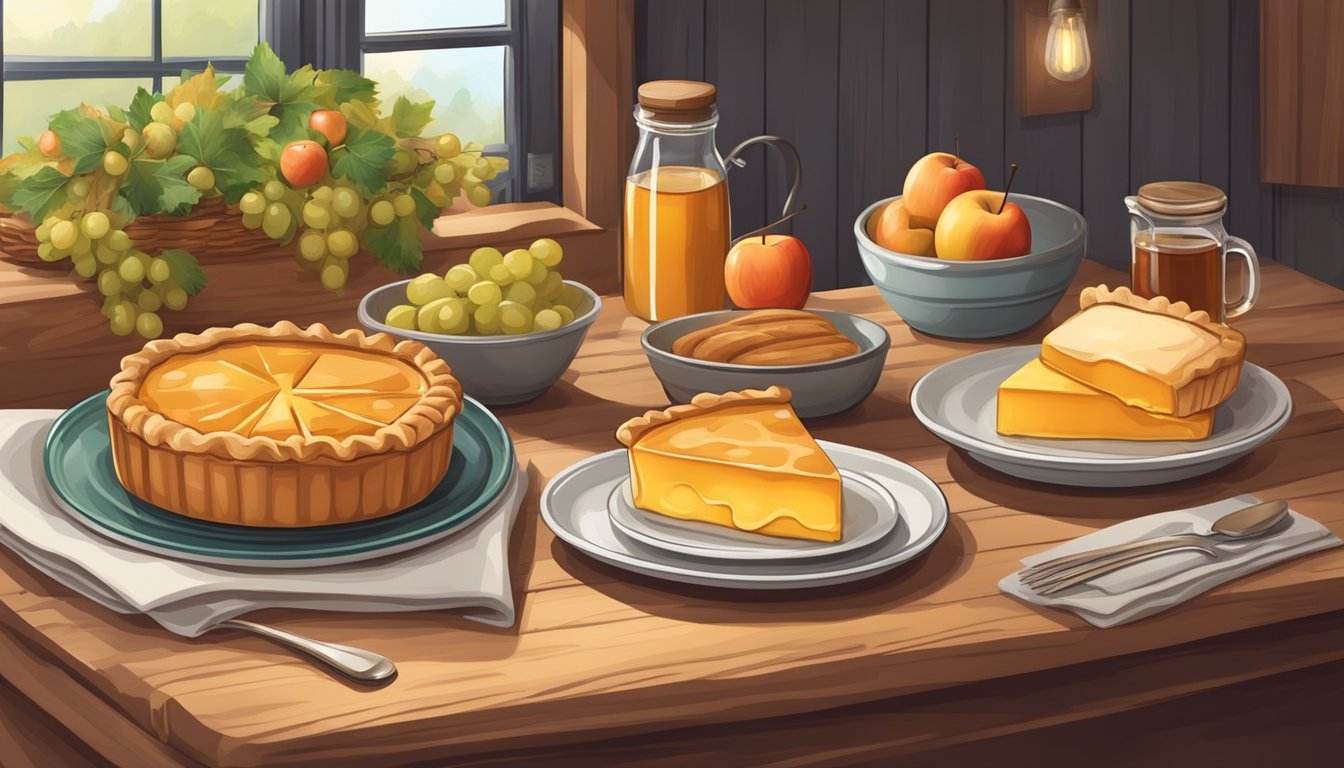What Food is Vermont Known for?
A Guide to Iconic Vermont Dishes
Vermont is widely recognized for its rich culinary traditions that reflect the state's agricultural heritage and commitment to local sourcing. Known primarily for its maple syrup (how long does maple syrup last?), Vermont leads the United States in production, crafting over 2 million gallons of this liquid gold annually. Maple syrup isn't just a sweetener in Vermont; it's a staple, imbuing a range of dishes and products with its distinctive flavor. This natural resource underscores the state's reputation for producing high-quality, locally-sourced food products.
Another cornerstone of the Vermont food scene is its cheese. A leader in artisan cheese production, Vermont boasts a variety of high-quality cheeses that demonstrate the skill and dedication of its local cheesemakers. Whether integrated into dishes at restaurants or enjoyed on their own, these cheeses are a testament to Vermont’s exceptional dairy industry. In addition to dairy, Vermont’s meat and produce are also notable. Across the Green Mountain State, farms provide restaurants and markets with fresh ingredients, from grass-fed beef to organic produce, that are central to creating the simple yet delicious dishes that are emblematic of Vermont's food identity.
Historical Context of Vermont Cuisine
Vermont's cuisine has a rich history, deeply intertwined with the influence of Native Americans, the development of dairy farming, and the evolution of farm-to-table traditions. These aspects have collectively shaped the distinctive food culture of the state.
Influence of Native Americans
Native American tribes, such as the Abenaki, originally inhabited Vermont, utilizing the land's bountiful resources. They introduced staples like corn, beans, and squash, which became known as the "Three Sisters." These crops were not only vital for survival but also influenced the agricultural practices of settlers who arrived later.
The Development of Dairy Farming
Dairy farming emerged as a cornerstone of Vermont's agriculture in the late 19th and early 20th centuries. By 1983, dairy farms constituted 79% of all farm profits in Vermont, though this declined to 69.9% by 1995. The farms produced a variety of dairy products including a notable selection of local cheeses, a tradition that is still prominent in Vermont today.
Evolution of Farm-to-Table Traditions
Vermont has been a forerunner in the farm-to-table movement, a tradition reflecting the state's deep-seated values of sustainability and local sourcing. This approach emphasizes fresh, locally-produced foods, making restaurants and households alike favor ingredients like artisan cheeses and locally sourced eggs for their freshness and quality.
Vermont's Staples and Signature Foods
Vermont is renowned for its rich culinary heritage centered around locally-sourced maple syrup, dairy products, and orchards. The state's food culture reflects a commitment to quality and tradition in these staple items.
Maple Syrup and Maple Products
Maple Syrup: Vermont is the largest producer of maple syrup in the United States. The state's maple syrup, known for its distinct quality, is part of a production that yields over 2 million gallons annually. Vermont's maple is not confined to syrup; it permeates a variety of products, including the famed Maple Creemee, a soft serve ice cream celebrated for its maple flavor.
Maple Products:
Maple candy
Maple cream
Maple-flavored beverages
Dairy Products and Cheeses
Dairy: The dairy industry forms a cornerstone of Vermont's agricultural output, with dairy farms spread across the Green Mountain State. High-quality milk from Vermont's dairy cows is the foundation for an array of dairy products.
Cheeses: Renowned cheesemakers like Cabot Creamery and Jasper Hill Farm contribute to Vermont's reputation for producing exceptional cheeses. Vermont is particularly famous for its Cheddar Cheese, especially the varieties crafted by Grafton Village Cheese Company.
Cheese Varieties:
Cheddar
Gouda
Blue cheese
Apples and Apple Products
Apples: (how long do apples last?) The state's cool climate is conducive to apple cultivation, making apples a signature fruit of Vermont. Orchards produce a variety of apples that are used in both fresh consumption and products like cider.
Apple Products:
Apple cider
Apple pies
The diversity of Vermont's staples, from its pure Maple Syrup to its rich Cheddar Cheese and crisp apples, illustrates a deep-rooted culinary tradition that is integral to the state's identity.
Local Produce and Seasonal Ingredients
Vermont's agricultural industry thrives on a cycle of seasonal produce and high-quality meats. With a landscape that changes from the lush green of summer to the harvest gold of fall, local farmers and producers deliver an array of fresh fruits, vegetables, and meats that embody the state's commitment to farm-to-table dining.
Fruits and Vegetables
In Vermont, summer ushers in a bounty of berries and apples, attracting locals and visitors alike to its numerous farmers' markets. By fall, the attention turns to hearty vegetables like squash and potatoes. The state celebrates the uniqueness of native produce such as fiddleheads, a type of fern that is foraged in the spring. Here's a glance at Vermont's seasonal offerings:
Summer:
Berries (strawberries, blueberries, raspberries)
Apples
Tomatoes
Summer squash
Fall:
Apples
Potatoes
Squash varieties (butternut, acorn, pumpkin)
Fiddleheads (spring-to-early-summer)
Meats and Game
Vermont is known for its high-quality meats, with local producers offering everything from grass-fed beef to free-range poultry. Game meats are a special treat, with venison (What wine goes well with venison?) and lamb taking center stage on many Vermont menus. The meats are often available year-round, but they're particularly sought after during the fall hunting season.
Beef: Often grass-fed, contributing to a leaner and more flavorful profile
Poultry: Includes turkey and chicken from free-range farms
Game Meats:
Venison: A fall favorite, known for its rich flavor
Lamb: Offered by several local farms, appreciated for its tenderness and taste
Iconic Vermont Dishes and Specialties
Vermont's culinary landscape is as picturesque as its rolling hills and verdant valleys, showcasing a hearty selection of savory plates and sweet indulgences that capture the state's agricultural richness and tradition.
Savory Delights
Poutine: This Canadian classic has found a beloved spot in Vermont's culinary scene. A heap of crispy fries is topped with cheese curds and smothered in a warm, rich gravy.
Gravy Fries: A simpler take on poutine, these fries forego the cheese curds but are nevertheless drenched in savory gravy, making for a comforting, indulgent treat.
Venison Dishes: Vermont's hunting tradition brings venison to the table in various forms, from rich stews to perfectly seared steaks, showcasing the game's natural and robust flavors.
Cheese and Maple Pairings: The state's artisanal cheese, when paired with locally-produced maple syrup, creates a fusion of sweet and savory flavors, a true testament to Vermont's premier food products.
Sweet Treats and Desserts
Maple Creemee: This soft serve ice cream, infused with pure Vermont maple syrup, provides a creamy and sweet experience, highlighting the state's signature product.
Sugar on Snow: A delightful wintertime treat made by drizzling hot maple syrup over fresh snow, which instantly cools the syrup into a taffy-like consistency.
Apple Pie: With a nod to classic American desserts, Vermont's apple pie stands out, especially when made with local heirloom varieties and often enjoyed with a slice of sharp cheddar cheese.
Cider Donut: A staple at Vermont apple orchards, these donuts (how long do donuts last?) are infused with apple cider, creating a moist, flavorful cake that's typically rolled in cinnamon sugar.
Strawberry Rhubarb Pie: This pie marries the tartness of rhubarb with the sweetness of strawberries, encapsulating the flavors of Vermont's summer season in every slice.
Culinary Experiences and Food Culture
Vermont's food culture is rich with locally sourced ingredients and an emphasis on community-supported agriculture. Artisanal producers and chefs across the state are known for their commitment to quality and freshness, providing a unique and authentic dining experience.
Farmers' Markets and Farm Stands
Vermont farmers' markets are a treasure trove of fresh, local produce, offering a taste of the state's seasonal best. They form the nexus of community and food, where local cheeses, renowned for their quality, are often featured prominently. Farm stands at places like Shelburne Farms on the shores of Lake Champlain present not just produce but a range of locally-made goods, from maple syrup to organic meats.
Hidden Gem Restaurants and Eateries
Food enthusiasts venture to Vermont in search of hidden gem restaurants such as Black Sheep Bistro, where the local ethos comes to life in vibrant dishes. Burlington, as a hub, boasts a variety of such eateries, each with its own character, often tucked away ready to be discovered and savored. These restaurants pride themselves on menus crafted around locally sourced fare, presenting Vermont's agricultural heritage with a modern twist.
Craft Beer and Beverages
Vermont's craft beer scene is nationally recognized, with an array of breweries offering distinct flavors that reflect the local terroir. The beverage culture extends beyond beer to include a variety of ciders and spirits, all of which complement the food culture of the state. Locals and visitors alike can enjoy tastings and tours at breweries and distilleries, further enriching the Vermont culinary experience.
Vermont's Food Industry Evolutions and Innovations
Vermont’s food industry has seen substantial growth and innovation, particularly in its artisanal food production and commitment to sustainable agriculture.
Artisanal and Specialty Food Producers
Vermont is home to a plethora of artisanal and specialty food producers that have gained widespread recognition for their quality and craftsmanship. Cabot Creamery is a prime example, known for its award-winning cheddar cheese. Similarly, Jasper Hill Farm is another esteemed producer, focusing on high-quality dairy products, including their own line of fine cheeses. These producers often emphasize traditional methods, giving rise to a distinctive product range that encapsulates the essence of Vermont.
Grafton Village Cheese follows suit, producing handcrafted artisanal cheeses that put emphasis on flavor and quality. Meanwhile, Cold Hollow Cider Mill in Waterbury represents innovation in cider production, offering a variety of cider-related products which attract both locals and visitors.
Sustainability and Organic Farming
Sustainability is another cornerstone of Vermont's food industry. Many Vermont farms and companies, such as Shelburne Farms, have pioneered techniques in organic farming, leading to healthier soils and more robust ecosystems. This commitment to organic practices underpins their high-quality dairy production and educational missions around sustainable agriculture.
The integration of sustainability extends to other sectors as well. Lake Champlain Chocolates, for instance, prides itself on sourcing local, organic ingredients for its confections, embodying the Vermont culture of environmentally conscious and sustainable production methods. These innovations and practices not only support the local economy but also set a standard for the food industry nationwide.
Exploring Vermont's Food through Its Geography
Vermont’s diverse geography, from the lush Green Mountains to the fertile valleys, plays a pivotal role in shaping its rich culinary traditions. Each locale contributes its unique ingredients and methods to Vermont’s gastronomic tapestry.
Food Scenes in Vermont's Cities and Towns
Burlington: Located on the shores of Lake Champlain, Vermont’s largest city, Burlington, is a culinary hotspot where local produce from the surrounding countryside makes its way into city menus, . Restaurants often highlight dishes that incorporate fresh, local ingredients, reflecting both the seasonal offerings and the city’s commitment to supporting local farmers.
Montpelier: As the state capital, Montpelier is steeped in New England culinary tradition. Small eateries and family-owned restaurants serve up classic Vermont fare, emphasizing locally-sourced dairy products and meats, embodying the farm-to-table ethos that pervades across Vermont.
Richmond: Nestled near the Green Mountains, the town of Richmond is representative of Vermont's small town food scenes, where community-focused dining establishments pride themselves on a close-knit relationship with local food producers. They offer menus that change with the seasons, always presenting something fresh and representative of Vermont’s rural bounty.
The Role of Vermont's Waterways and Countryside
Lake Champlain: This vast body of water not only defines part of Vermont's border but also its culinary scope. Lake Champlain supplies fresh fish, adding another dimension to Vermont’s local cuisine. Restaurants along the lake often feature lake trout and other freshwater species in their dishes.
Countryside: Vermont's countryside is a quilt of dairy farms and maple groves, contributing to the state's reputation for cheese and, most notably, maple syrup. The Green Mountain State is the top producer in the United States, with the maple syrup and dairy products being cornerstones of Vermont's culinary identity.
Mountains: The mountainous terrain supports a variety of agriculture. Apple orchards flourish in the cooler hillside climates, while the valleys provide shelter and fertile soil for vegetable farms. These ingredients travel from the countryside to towns and cities, invigorating Vermont’s food scene with high-quality, flavorful produce.
In sum, Vermont’s food scene is a direct reflection of its geographic diversity—from urban centers to rolling countryside—which together with the state's commitment to locally-sourced ingredients, sustains its distinctive place in the tapestry of American regional cuisine.


